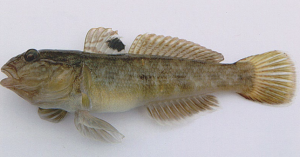Aquatic Invasive species are entering the Hudson River through the Erie Canal + Mohawk River
 Round goby – Photo credit: Peter van der Sluijs
Round goby – Photo credit: Peter van der Sluijs
The Erie Canal and Mohawk River have become a thoroughfare for aquatic invasive species to enter the Hudson River Watershed from the Great Lakes and Mississippi River. Most recently, the round goby, which is native to Eurasian fresh and marine waters, was discovered in the Hudson River in July 2021 when DEC Marine Fisheries captured four downstream of the Troy dam and have now been documented as far south as Marlboro.
Introducing non-native species into an ecosystem can disrupt food webs and local ecology, and outcompeting native species. As an example, round gobies are voracious feeders, consuming mussels, small invertebrates, and the eggs of native species. Competing with native species for food and habitat, adult gobies also take over the nearshore spawning areas of native species, and have high reproductive potential, spawning every 20 days during spawning season.
To protect the Hudson River ecosystem, timely action is needed to separate the Hudson River, Great Lakes, and Lake Champlain’s watersheds. Existing procedures and technology combined with the existence of the locks within the canal create a unique opportunity to proactively stop the further introduction of invasive species currently entering the Great Lakes from the Mississippi watershed.
Take Action: Ask Governor Hochul to take action to stop invasive species from entering the Hudson River through the Erie Canal!
Learn more by watching our recent virtual learning program about invasive species: Highway to the Hudson: The New York State Canal System and the Spread of Invasive Species into the Hudson River
The New York State Canal System has long served as a thoroughfare for commerce – additionally, the canal system also is a thoroughfare for aquatic invasive species to move into new waterways – including the Hudson River watershed. During this program, aquatic ecologist Stuart Findlay explores the ecological impacts and potential solutions to the movement of aquatic invasive species through the New York State Canal System with minimal effects on commercial and recreational use. Watch on YouTube.
